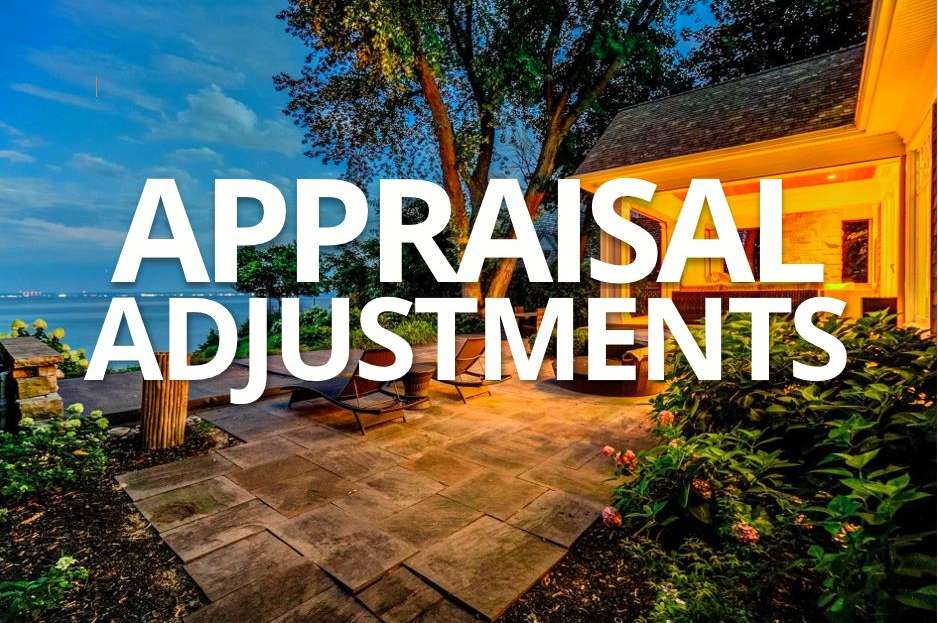It’s not just a comparison to the house next door.
It happens to every appraiser, often once a week: Someone involved in the property buying and selling process says something like “Yeah, this appraisal won’t be that hard. The house across the street sold a month ago and it’s pretty much the same layout, so we expect the value of our property to be about that price – well, a bit more probably, since prices are going up so fast!”
Now, it’s true that in some large, newer subdivisions, where the homes really are all about the same size, layout and finish, and there hasn’t been time for the owners to renovate bathrooms (or not), construct additions (or not), or replace the roof (or not), there might not be a lot of difference between two houses across the street from each other which sell within a couple of months.
But valuations aren’t made on the basis of finding a perfect match. Home appraisals, generally speaking, are based on answering this question: “What would the average purchaser, looking in this general area, be willing to pay for this property?”
It’s important to remember that, generally speaking, ‘average purchasers’ aren’t looking at a row of identical houses and then choosing the one that happens to have the nicest front door. Average purchasers are usually looking at a number of different houses and then making adjustments in their minds: House #1 has a great kitchen but an unfinished basement; House #2 has a finished basement but only 2 bathrooms; House #3 has three bathrooms but the family room has baseboard heating and no insulation – which house they finally purchase, and the price they’re willing to pay for it, involves balancing a huge number of factors.
How do these perceived tradeoffs affect valuation?
Real estate appraisals involve all kinds of factors, from location to condition to zoning and the experience level of the person conducting the appraisal. However, when it comes to single-family residential real estate valuations, these are the factors that buyers and sellers should be thinking about before they assume the value will be the same as the house across the street.
1. Location may be less specific than you think. Here in Hamilton, for example, there are a handful of neighbourhoods which are considered equally desirable to buyers, especially those with young families whose kids haven’t yet started school and therefore have no strong ties to a particular street or block. In these cases, it may make sense to compare a property in Neighbourhood X to a similar property in Neighbourhood Y, even though they are 2km away.
2. House condition-related adjustments aren’t always obvious. We often see homes which are in fantastic condition because the same family has lived there for decades and taken pride in their home. In these houses, the kitchen (for example) may be in great condition – cabinets look like new, light fixtures are gleaming, flooring is perfect – but the style is so out of date that potential purchasers think “Oh we’d have to totally renovate this kitchen” – and that becomes one of the value tradeoffs mentioned above.
3. One person’s value-add is another person’s ‘meh’. Garages and sheds can be challenging in the comparison process. While some purchasers wouldn’t buy anything less than an attached double garage, others are fine with none. Some purchasers think of a backyard shed as a dream come true, while others resent losing that much yard to an outbuilding. This is also location-dependent: Garages and sheds may have less effect on total value in downtown, high-density areas, but may be a make-or-break item in more rural areas.
4. Walkability. The walkability of a neighbourhood – the ability to walk from the property to shopping, entertainment and services, meaning less reliance on driving every day – is having an increasing effect on valuations here in southern Ontario. Faced with two otherwise-similar houses, purchasers these days are more likely to pay a premium for the one which allows them to walk to stores and restaurants.
5. Community. We’re seeing an increased focus on whether a property is located in a neighbourhood with a sense of ‘community’. Are the schools in the area well-regarded? Are the neighbours friendly? Do people chat at the local dog park or encourage those portable libraries? This is probably a result of the pandemic and associated lockdowns: When you’re spending more time at home (and many of us will continue to be working at home more often for the foreseeable future), there’s an increased desire to feel like part of a local community. How this will turn up as line items on appraisal reports in the longer term isn’t yet clear, but it’s definitely a factor in comparative values.
This isn’t a comprehensive list of factors, of course.
Part of the challenge (and fun) of real estate appraising is that it’s constantly evolving: The definition of an ‘average’ purchaser changes over time, and so does what they want out of an ‘average’ home. So it’s important to know that these 5 items aren’t the only things that may affect valuations in surprising ways. But if you find yourself looking at an appraisal report and wondering why the comparable sales used don’t include the one across the street that sold last month, this list is a good place to start.


